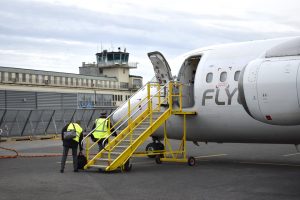 Predictive maintenance systems are a critical component of modern-day aircraft. As explained in the white paper titled “Predictive maintenance benefits for the airline industry” by IBM, these systems are capable of identifying problems before they happen. Predictive maintenance lives up to its namesake by using Big Data to better predict when a problem will occur, notifying the respective owner/company so they can take measures to prevent it.
Predictive maintenance systems are a critical component of modern-day aircraft. As explained in the white paper titled “Predictive maintenance benefits for the airline industry” by IBM, these systems are capable of identifying problems before they happen. Predictive maintenance lives up to its namesake by using Big Data to better predict when a problem will occur, notifying the respective owner/company so they can take measures to prevent it.
While Airbus has been using predictive maintenance in its aircraft for many years now, the company just recently announced plans to integrate its two existing approaches together. Currently, Airbus uses two approaches for predictive maintenance. In 2018, however, the company says it will use a single approach, featuring elements from both of its existing approaches.
One of the predictive maintenance approaches currently being used by Airbus is aircraft-centric. This is essentially a digital program known as Prognostics and Risk Management (PRM). Delta Airlines was the first customer of PRM, which it began using 2016 after working closely with Airbus. PRM uses a web-based application that’s able to perform calculations using a condition monitoring system that comes preloaded in aircraft. The system collects inflight data, which it sends to controllers on the ground through ACARS. It also features various computer algorithms to detect system flaws and degradations.
According to Airbus, PRM has saved operators over $550,000 in just one year by monitoring only a few select parts on some 40 Airbus A330s. “This savings is just the tip of the iceberg” said Vincent Swiderski of Airbus Services.
In addition to PRM, the other predictive maintenance approach used by Airbus is data-centric. Airbus has partnered with easyJet to optimize this approach. Data-centric collects data from numerous sources and stores this data in the Airbus cloud, where it can then be applied to other algorithms to improve safety and experience. Airbus says its data-centric approach is a powerful way to contextualize information. However, it also says that user feedback is critical to validating the right alerts, as there’s a possibility of false flags.
So, what’s next for Airbus and its predictive maintenance systems? The company will continue developing and enhancing these two approaches. In 2018, however, Airbus says it will converge its data-centric and aircraft-centric approaches into a single predictive maintenance system. While there’s no specific time table set for this convergence, the company says it will likely happen some time in the first quarter of 2018.



